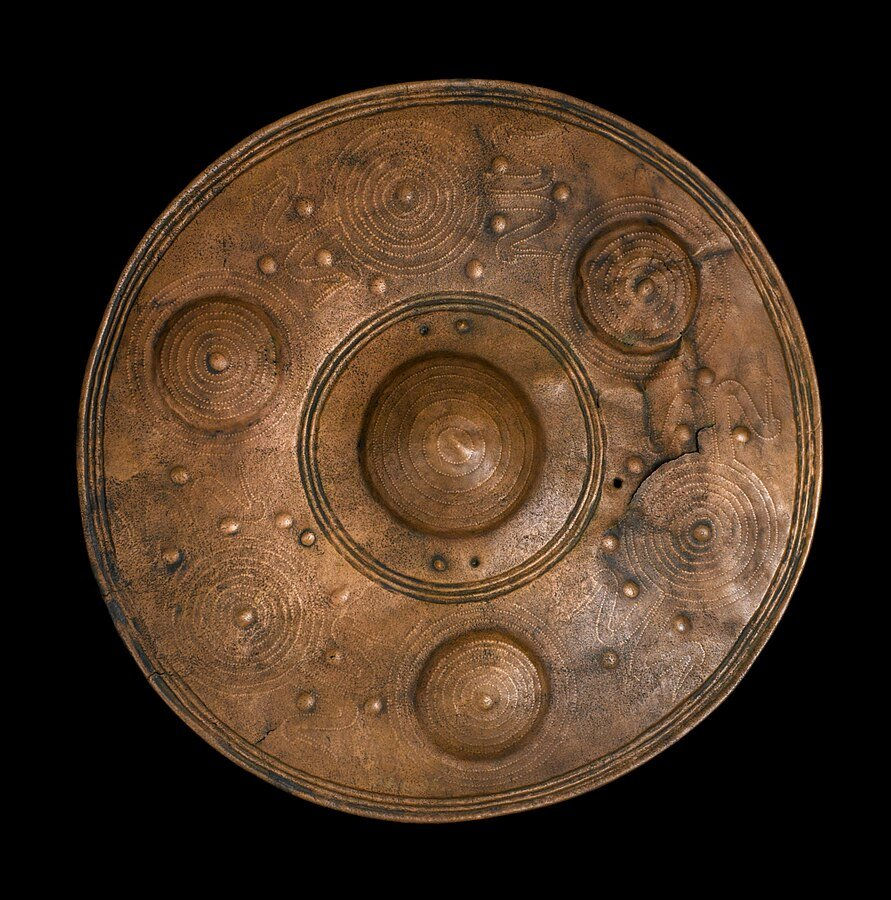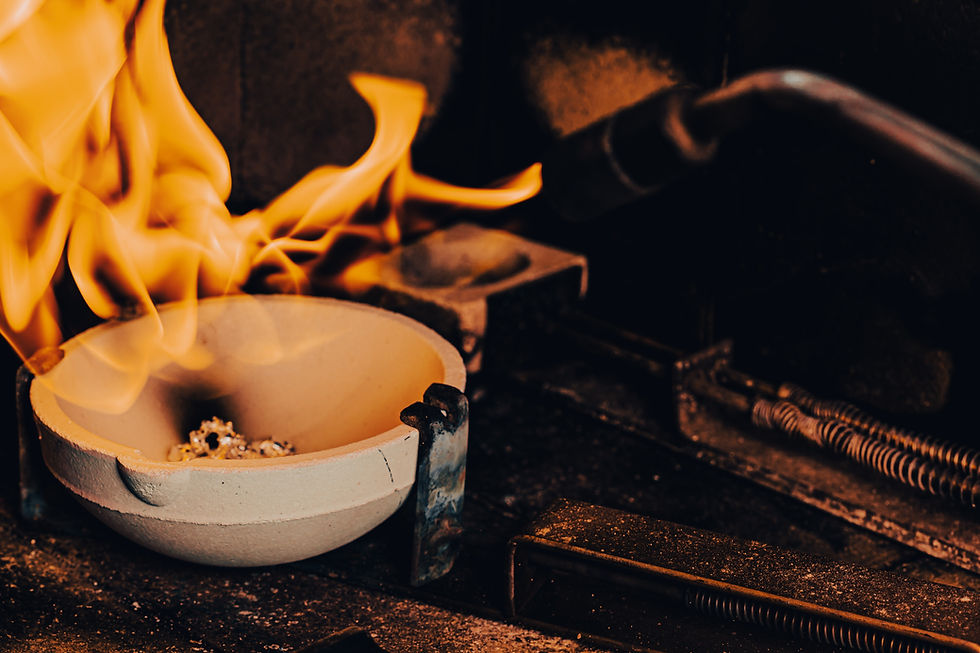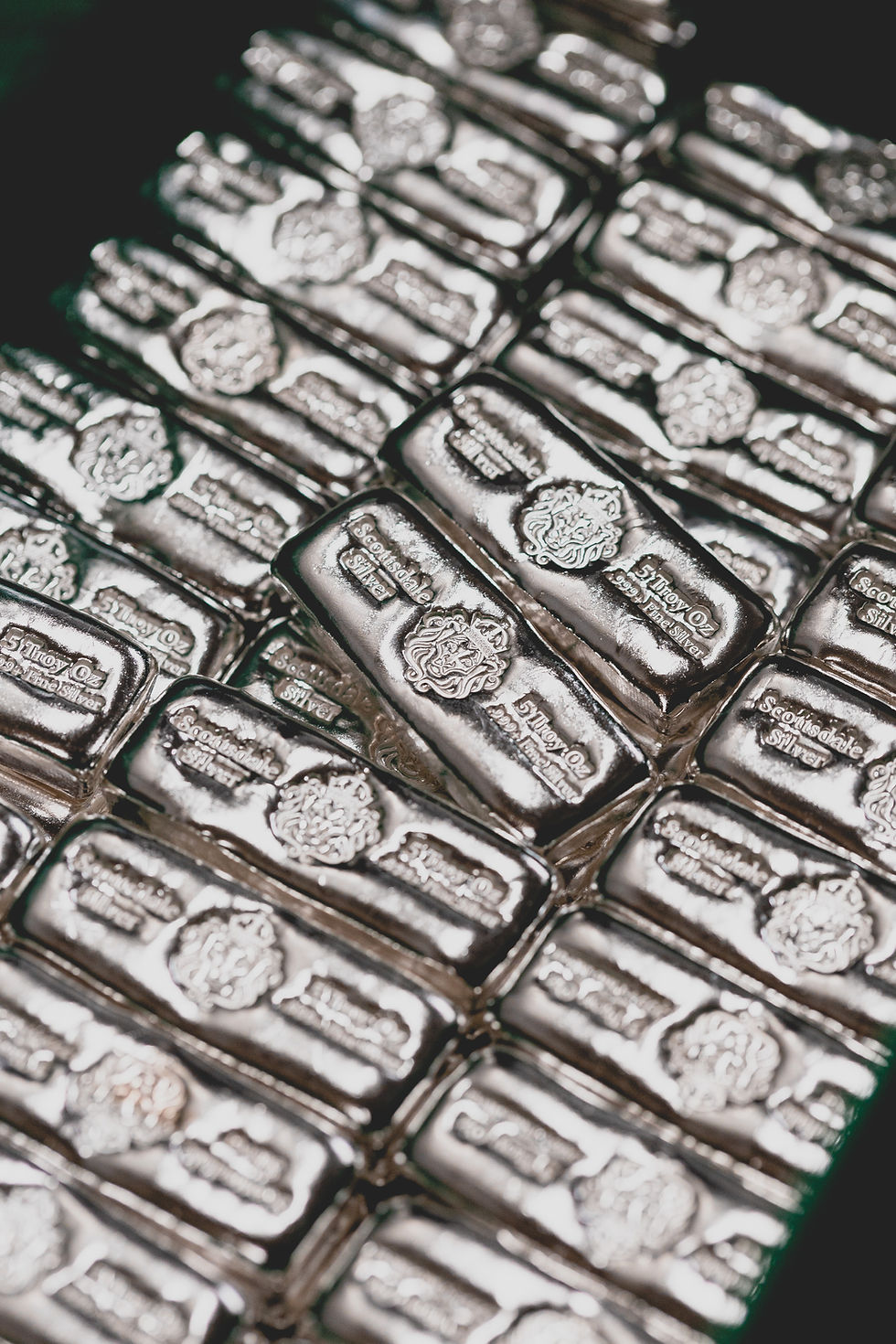How to Make Asem: Essential Alchemy
- Sylvia Rose

- Aug 10, 2024
- 7 min read
Updated: Sep 24, 2024
Asem is a stock metal mix in alchemy, usually prepared in quantity ahead of time and added to alchemical recipes as needed. Asem is often used in doubling or multiplying metals such as gold or silver. Recipes are from the Leyden Papyrus c. 300 AD.

Drachmas and minas refer to weights and measures. Values can vary over time and geographic location. The Attic system below is most widely used.
Approximately:
One drachma = 0.15 oz or 4.3 g
One mina = 100 drachma or 15.4 oz or 436.6 grams
Alchemists of ancient Alexandria, working in late antiquity, would definitely use some of these processes. By the time the recipes are recorded in the Leyden / Stockholm Papyri c. 300 AD, many have been around a while, passed from practitioner to student.

Mary the Jewess, called the first true alchemist, is working in Alexandria c. 100 AD. The Greco-Egyptian capital is in Roman hands since 30 BCE, and what a mess they make of it. Culture and education dry up due to Roman lack of interest and the Great Library falls.
Still, from 200 BCE to 270 AD, Alexandria is the biggest city in the world, eclipsed by Rome only in the late 3rd century. It's the Golden Age of Alchemy. A major glassmaking center, Alexandria is a mélange of Christian, Hebrew, Gnostic, Hermetic and Neo-Platonist thought.

Alchemists seek to color metals and make medications. Alchemy emerges from metallurgy, gemology and ancient medicine. Practitioners, often friars in medieval times, use alchemical processes to make healing elixirs and ointments.
Several ingredients in these recipes come from the Black Sea region, which the Greeks have been busy colonizing for about a thousand years. Sinope is the first Greek colony on the Black Sea coast, founded in the 7th century BCE.

Metal Melting Points
Platinum: 1,768 °C (3,214 °F)
Nickel: 1, 453 °C (2647 °F)
Copper: 1,075 °C (1983 °F)
Gold: 1,064 °C (1947 °F)
Silver: 961.8 °C (1763 °F)
Zinc: 420°C (787°F)
Lead: 327 °C (622 °F)
Tin: 232 °C (450 °F)
Mercury: -38.8 °C (-37.8 °F) the only metal which is liquid at room temperature
Step 1: Purification of Tin that is put into the Alloy of Asem
"Take tin purified of any other substance, melt it, let it cool; after having well mixed and covered it with oil, melt it again; then having crushed together some oil, some bitumen, and some salt, rub it on the metal and melt a third lime; after fusion, break apart the tin after having purified it by washing: for it will be like hard silver ... "

"Then if you wish to employ it in the manufacture of silver objects, of such a kind that they cannot be found out and which have the hardness of silver, blend 4 parts of silver and 3 parts of tin and the product will become as a silver object."
Tin, a soft metal with a low melting point, most famous for its role in creating the alloy bronze with copper (88% copper + 12% tin) and as a lightweight material for utensils. Purifying tin is a skill necessary for metallurgists and alchemists alike.

Step 2: Manufacture of Asem
"Tin, 12 drachmas; mercury, 4 drachmas; earth of Chios, 2 drachmas. To the melted tin, add the crushed earth, then the mercury, stir with an iron, and put (the product) in use."
Earth of Chios is a white clay mineral earth found on the Greek Isle of Chios in the North Aegean. It appears in many alchemical formulae and recipes, often in terms of silvering or whitening a metal.
Once the first batch of asem is prepared to satisfaction, the doubling of asem can commence.

Step 3. Doubling of Asem
"One takes: refined copper, 40 drachmas; asem, 8 drachmas; tin in buttons, 40 drachmas: one first melts the copper and after two heatings, the tin; then the asem. When all are softened, remelt several times and cool.
"After having augmented the metal by these proceedings, clean it with talc. The tripling is affected by the same procedure, with weight being proportioned in conformity with what has been stated above (Step 2)."

Talc is a perfect addition to the basic stock of alchemical needs. Later alchemist Caterina Sforza in Italy experiments widely with talc in cosmetics, metals and medicines. The softest stone, 1 on the Mohs hardness scale, it's easily ground into talcum powder.
Tin in buttons refers to a type of tin ingot of a certain weight. Early trade loves ingots, with pre-measured amounts dear to the hearts of alchemists and metal workers such as bronze makers and tinkers. Tin has a low melting point compared to other metals.

Step 4: Inexhaustible Stock of Asem
"It is prepared by the procedures described in the doubling of asem. If you wish to deduct 8 drachmas from the stock, separate them and remelt with 4 drachmas of this same asem; melt these three times and then repeat, then cool and place in reserve in the talc."
Other Methods
Method 1: Manufacture of Asem (one needs asem to make this)
"Take soft tin in small pieces, purified four times; take 4 parts of it and 3 parts of pure white copper and 1 part of asem. Melt, and after the casting, clean several times and make with it whatever you wish to. It will be asem of the first quality, which will deceive even the artisans."

White copper is cupronickel, a copper nickel alloy. Copper and nickel work well together. "Cupfernickel", copper nickel, or nickel is often is often cursed by miners because it corrupts copper, and copper can't be extracted from it. Nickel means mischievous or malevolent spirit.
Method 2: Manufacture of Fusible Asem (easily melted or fused)
"Copper of Cyprus 1 mina; tin in sticks, 1 mina; stone of Magnesia, 16 drachmas; mercury, 8 drachmas, stone of Paros, 20 drachmas. Having melted the copper, throw the tin on it, then the stone of Magnesia in powdered form, then the stone of Paros, and finally the mercury; stir with an iron rod and pour at the desired time."

Cyprus is well known as a copper mining and processing center, beginning in the Neolithic Age. Battles over copper ownership rage during the Bronze Age and later.
Stone of Magnesia astonishes early Greeks with its powers of attraction. They call it magnes lithos (stone of Magnesia) whence originates the word magnet. The mineral referred to is the lodestone variety of magnetite, or iron oxide.

Stone of Paros comes from the island of Paros, part of the Cyclades Island group. On ancient Paros a type of fine white marble is extensively quarried. This is believed to be the Stone of Paros.
Marble is slightly harder than limestone and not as hard as granite, thus easily ground to granules or powder, especially by an apprentice. Today marble powder is added to concrete to harden it.

Metal Fix: Treatment of Hard Asem
"How it is expedient to proceed to change black and hard asem into white and soft (metal). Taking some leaves of the castor-oil plant, infuse them a day in water; then soak it in the water before melting and melt twice and sprinkle with aphronitron. And throw alum on the casting; put into use. It possesses quality for it is beautiful."
Aphronitron is niter, a mineral form of potassium nitrate. In ancient writings the term may also be equated with natron, an Egyptian embalming essential.

Whitening of Copper
"For whitening copper, in order to mix it with with parts of asem, so that no one can recognize it. Taking some Cyprian copper, melt it, throwing on it 1 mina of decomposed sandarach, 2 drachmas of sandarach of the color of iron, and 5 drachmas of lamellose alum and melt (again). In the second melting, there is thrown on 4 drachmas, or less, of wax of Pontus: it is heated and then poured."
Sandarach is a term for the pale gold resin of Tetraclinis articulata, an African tree. During late antiquity it's used as incense and is famous as a lustrous varnish. Sandarach "the color of iron" can refer to red arsenic or realgar. Wax of Pontus comes from the Pontus region on the south coast of the Black Sea.

The first Greek settlement on the Black Sea is Sinope in the 7th century BCE. Early adventurers bring back tales of Amazon warriors; and Stymphalian birds appear on the Isle of Giresun as hero Jason sails to Colchis to steal the Golden Fleece.
Non-Fiction Books:
Fiction Books:
READ: Cult of the Fire God - Bronze Age Quest Adventure
READ: Lora Ley Adventures - Germanic Mythology Fiction Series
READ: Reiker For Hire - Victorian Detective Murder Mysteries


